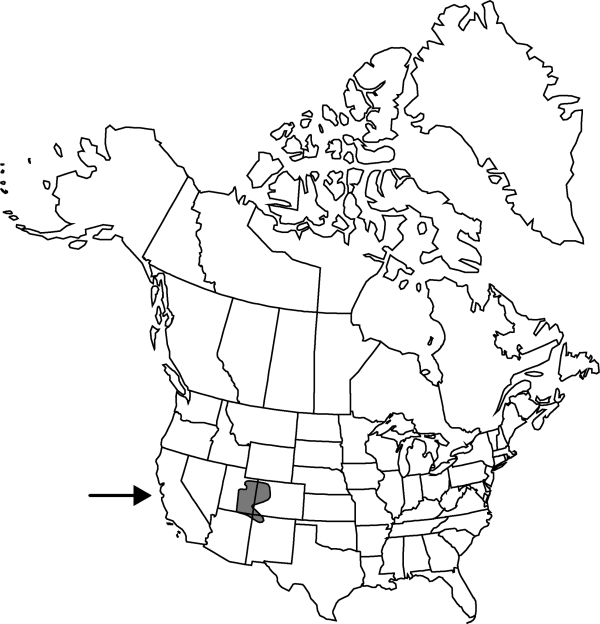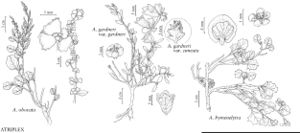Difference between revisions of "Atriplex gardneri var. cuneata"
Great Basin Naturalist 44: 190. 1984.
FNA>Volume Importer |
FNA>Volume Importer |
Revision as of 20:02, 24 September 2019
Subshrubs, dioecious or sparingly monoecious, mostly 1–4.5 × 4–20 dm. Stems decumbent. Leaves opposite to subalternate proximally, alternate distally; petiole 2–12 mm; blade grayish green, obovate to spatulate, orbiculate or oblong, 10–50 × (5–)10–25 mm, 1.5–4.5 times longer than wide, margin entire. Staminate flowers dark brown or rarely yellow, in glomerules 3-4 mm thick, borne in terminal panicles 2–11 cm. Pistillate flowers in rather leafy unbranched spikes or spicate panicles 5–23 cm. Fruiting bracteoles sessile or on stipes to 9 mm, body globose to flattened, 5–9 mm and wide, terminal tooth to 2 mm, subtended with 2–4 lateral teeth, surface densely tuberculate to smooth and free of tubercles. Seeds 2–2.5 mm wide. 2n = 18, 27, 36+.
Phenology: Flowering spring–fall.
Habitat: Saline, fine-textured substrates on Mancos Shale, and other formations of similar texture and salinity, in greasewood and mat-atriplex communities
Elevation: 1200-2200 m
Distribution

Colo., N.Mex., Utah.
Discussion
A series of at least partially stabilized introgressants between Atriplex gardneri var. cuneata and var. utahensis in Carbon County form the basis of A. cuneata subsp. introgressa C. A. Hanson (type from Wellington, Hanson 346, 1961, holotype BRY!). The hybrids between var. cuneata and A. confertifolia have been described as A. neomexicana Standley; they occur where the ranges of the taxa overlap. The Castle Valley saltbush also forms apparent hybrids with A. canescens.
Selected References
None.
